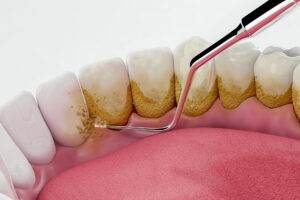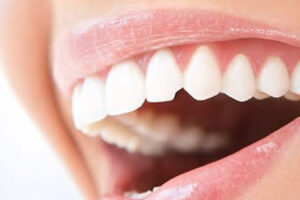TYPES OF DENTAL EMERGENCIES!

TYPES OF DENTAL EMERGENCIES!
Doctors say that dental emergencies are devastating and cause vital life-threatening morbidity and mortality. Surveys reveal that teething is the common cause of death in the middle ages. Dental emergencies arise at any time and health professionals advise you to be cautious if you’re suffering from dental problems.
What conditions are called dental emergencies? Here’s an article providing information about various types of dental emergencies.
- Toothaches.
There are different causes for the occurrence of toothaches. The common causes include trauma, bruxism (teeth grinding), dental decay, and infection, or local dental abscesses.
- Trauma leads to painful cracks or fractures in the tooth.
- Bruxism, also called tooth grinding often occurs during sleep. It also causes severe toothaches and hypersensitivity.
- Untreated dental decay encroaches on the dental nerves and causes severe pain.
- Microbial infections or local dental abscesses do trigger severe pain in the tooth.
When you experience a mild toothache, rinse your mouth with saline water. Natural vanilla extracts, cold compress, garlic, clove, wheatgrass, and thyme give relief from toothache. However, it’s suggested to visit the dentist as early as possible. Tooth extraction and root canal therapy are the two possible treatments for toothache.
- Cracked or fractured tooth.
An accidental injury, trauma, etc. cause tooth fracture leading to pain and discomfort in the tooth. Tooth cracks result in the loose tooth, chipping, and a knock out. All of them are dental emergencies. Cracked teeth make their way to the dental nerves and cause severe pain.
A fractured tooth is generally considered a cosmetic concern and it’s advised to visit any cosmetic dentistry like cosmetic dentistry in Gurgaon.
If you observe a fracture or crack in the tooth, visit the dentist before it worsens. The dentist treats the cracked or fractured tooth with the help of filling materials. A chipped tooth is treated by simply attaching the broken part. Root canal therapy is performed when the case is severe.
Tooth becomes non-restorable in some instances of badly cracked teeth. A tooth cannot be fixed and an extraction process is performed. Dental implants, dental bridges, and removable prostheses are replaced with the missing tooth.
- Avulsed tooth.
An avulsion is a condition where the tooth comes out of the socket along with the root. It is considered a serious condition and the person needs to visit the dentist immediately. The dentist performs manual replacement of the tooth which is called re-implantation. Success chances are present only if the tooth is replaced within 20-60 minutes of avulsion.
The other option for this condition is to place the tooth in milk. Milk is the best medium that supports the growth of the cells. It provides sugars, a suitable pH medium, proteins, and, anti-bacterial substances to keep the cells growing. This method is applicable for not more than 6 hours of avulsion.
- Swelling due to infections.
The base of the tooth swells leading to abscess formation. Swelling is due to the formation of pus in the tooth. Infection is the major cause of abscess formation and swelling. Swelling is seen in different parts like face, neck, and head. Facial swelling is the common symptom of infection spreading to various parts of the body. Facial cellulitis (accumulation of fluids in the face) also occurs when the case is severe.
Treatment using antibiotics is the preferred choice. It is also treated with tooth extraction, root canal therapy, and, Intravenous antibiotics. Home remedies include cold compression, gargling with lukewarm water, excess intake of Vitamin D, and, tea tree oil.
- Luxated or displaced tooth.
Dental trauma causes displacement of the tooth. The displacement of teeth occurs by:
- Extrusion – Displacement into the socket of the tooth.
- Intrusion – Displacement directly into the bone.
- Lateral Luxation – Displacement in other directions.
Repositioning the tooth is the only choice for Luxated tooth. Splinting is performed for lateral luxation where the teeth are splinted with the adjacent undamaged teeth using a small wire or some other bondable materials. Approach the best clinic in Gurgaon to get treated.
- Fall of a dental crown.
Instances like the fall of dental crowns are rare but are considered an emergency if occurred. Fall of dental crown occurs:
- When it becomes loose.
- Overeating of hard food.
- Overeating of sticky foods like sweets.
- Lack of proper care.
Visit the dentist immediately. When the crown falls off, the nerves and the dentine gets exposed and cause pain. Meanwhile, take certain measures to suppress the pain. Use any filling material until you visit the dentist. It’s suggested to avoid certain foods if you wear a dental crown to avoid emergencies like these.
- Unstoppable bleeding in the tooth.
In instances of dental restorations and trauma, continuous bleeding is common. The person experiences severe pain and excessive bleeding is considered a dental emergency.
The dentist performs a radiographic examination to determine the length between the origin of bleeding and the upper part of the tooth. Mineral trioxide aggregate (MTA) or Sodium Hypochlorite (NaOCl) are used to treat bleeding in the tooth.
Most of the best dental clinic in Delhi NCR provides treatment for this condition.
- Jaw fracture.
The broken jaw is undoubtedly a dental emergency due to its long-lasting effects on the tooth. Jaw fracture is usually the result of trauma or accidental injury. The broken jaw causes alterations in mouth opening and closing. This further causes difficulty while eating, talking, and, drinking. Gradually it leads to dental decay and a condition called arthritis.
The dentist performs a simple surgery to treat the condition. The patient is treated with anesthesia and fractured bones are brought together into place with the help of small metal screws or plates. Gums are stitched and the jaw fracture is treated.
Conclusion:
Dental related pain is described as the most agonizing type of pain anyone could experience. This is why one needs to consult the dentist as early as possible if you have dental problems. Take proper care and follow prescribed medications to avoid further problems.
Avoid dental emergencies by taking proper care. Visit the dentist regularly and ask your doctor to suggest some preventive measures to avoid emergencies.







